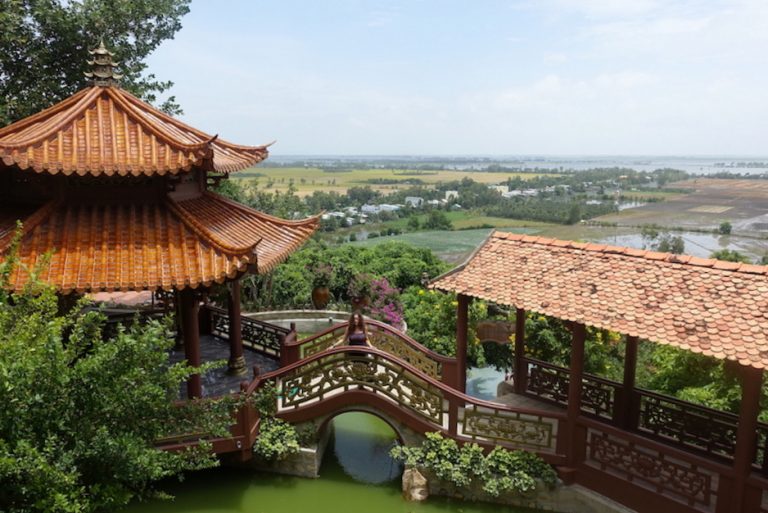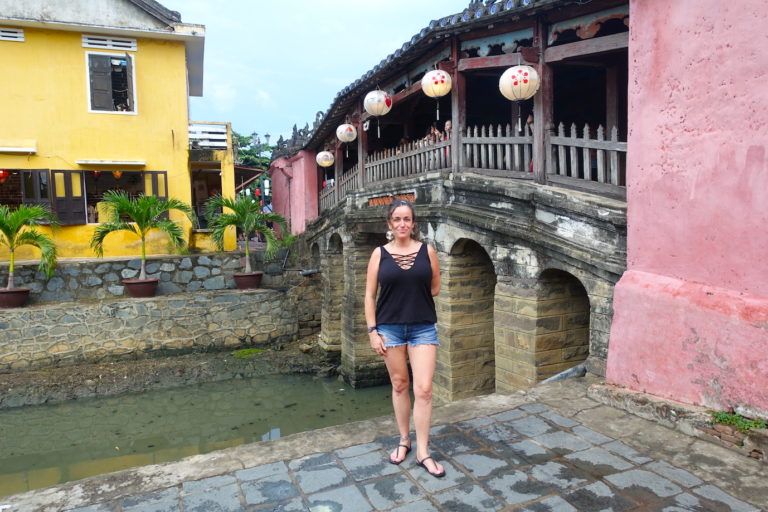IS HUE WORTH VISITING?
Hue is hidden gem in Vietnam and really worth a visit. The city is still overlooked by Vietnam tourist’s boom which gives the place a much more laid-back atmosphere than most places in Vietnam.
From ancient tombs and temples to vibrant markets, and an exhilarating nightlife, Hue will not leave you indifferent.
I visited Hue during my one month stay in Vietnam and I loved it. I am writing this guide to help you prepare your visit to this amazing place. This guide includes, tips, things to do, how many days to stay in Hue and the best time to visit.
I am also sharing some of photos so you will have an idea on what to expect when visiting the place.
So, let’s jump into this guide!
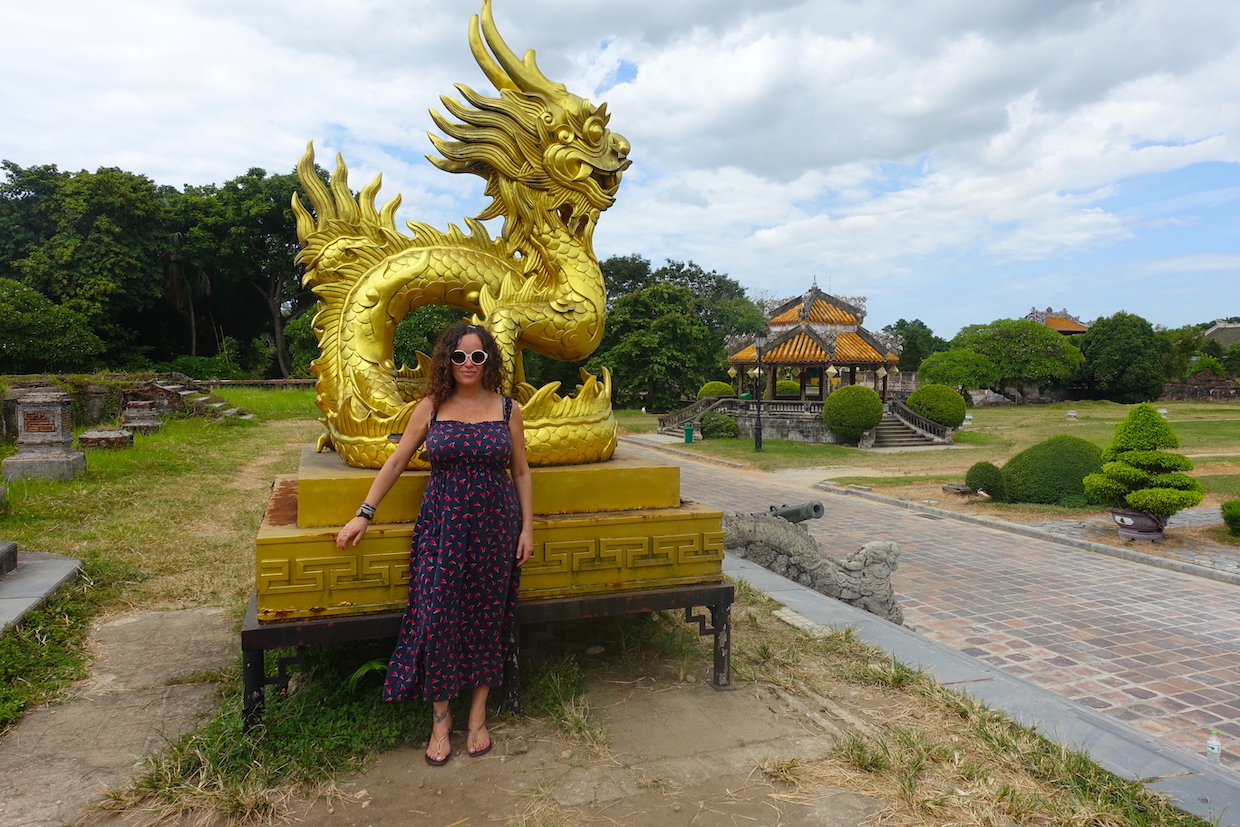
ABOUT HUE
Hue is a city in Vietnam located besides the Perfume river rich in cultural heritage. The city was once the capital of Vietnam, during the reign of the Nguyen dynasty, from 1802 to 1945 , the capital of Dang Trong from 1738 to 1775 and as the administrative center of Annam during the French Indochina. It served also as the capital of It contains a a complex of monuments designated as World UNESCO Heritage Site.
The city emanates an aura of grandeur, reminiscent of the old times , and it is a treasure of architectural marvels that can be visited in a really relaxed way, the city has remained out of the main tourists circuits, in Vietnam.
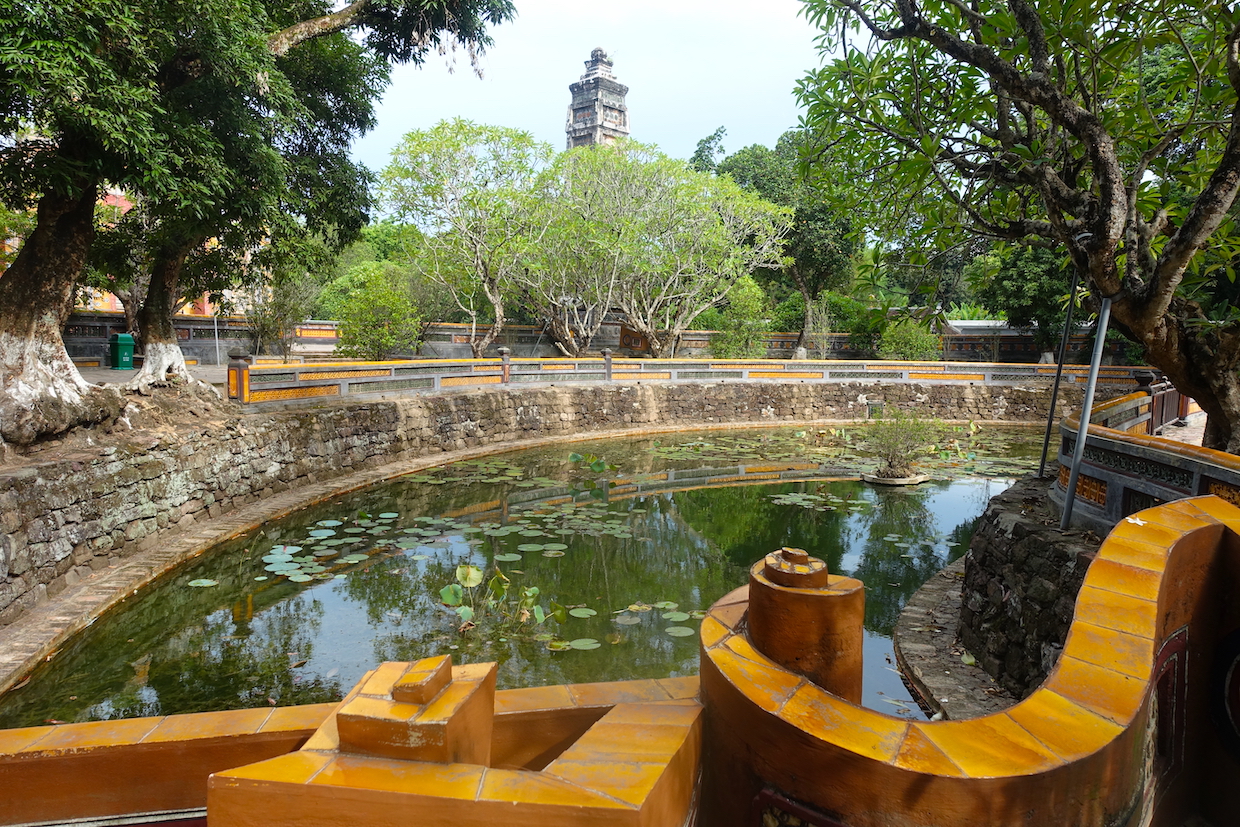
HUE LOCATION
Situated in central Vietnam along the banks of the Hương River, the city lies just a few miles inland from the East Sea. Approximately 700 km (430 mi) to the south of Hanoi and 140 Km from the famous Hoi An.
Find here a pin with Hue location:
HOW TO GET TO HUE
By Air:
Phu Bai International Airport, situated approximately 15 km south of Hue city center, is exclusively served by Vietnam Airlines. Within Vietnam, domestic routes link Hue to Hanoi with three daily flights and to Ho Chi Minh City with four daily flights. The flight duration from either Hanoi or Ho Chi Minh City is approximately 1 hour, with economy class tickets costing around $50-60.
By Bus:
Traveling from Hue to Hanoi or Ho Chi Minh City typically involves a lengthy overnight bus journey. Open tour bus tickets can be acquired from tourist areas in all three cities. For added convenience, you can opt for a stopover at destinations like Quang Tri, known for the historic DMZ lines separating North and South Vietnam, Quang Binh, home to the World Heritage Phong Nha caves, or Nghe An, the birthplace of Ho Chi Minh. Conversely, the route from Hue to Ho Chi Minh City boasts several noteworthy stops, including Hoi An, Nha Trang, and Mui Ne
By Train:
Journeying to Hue via train offers a delightful experience. Vietnam’s state-operated railway system spans the entire length of the country from Hanoi to Ho Chi Minh City. Daily trains stop at Hue, with two departures at 19:00 and 23:00. Express trains feature comfortable, air-conditioned compartments with soft berths at reasonable prices, providing utmost convenience. It’s advisable to purchase tickets directly at the station to avoid extra charges.
THINGS TO DO IN HUE
HUE IMPERIAL CITADEL
The Hue Historic Citadel, a fortified stronghold, was the seat of power for the Nguyen Dynasty, Vietnam’s final feudal ruling family, spanning from 1802 to 1945. Positioned along the northern shores of the Perfume River, it spans across 520 hectares of land
Hue Citadel is a fortified ancient fortress, a UNESCO World Heritage Site, stands as a testament to Vietnam’s imperial past. Ut served as the political, cultural, and religious center of the Nguyen Dynasty from 1802 to 1945.
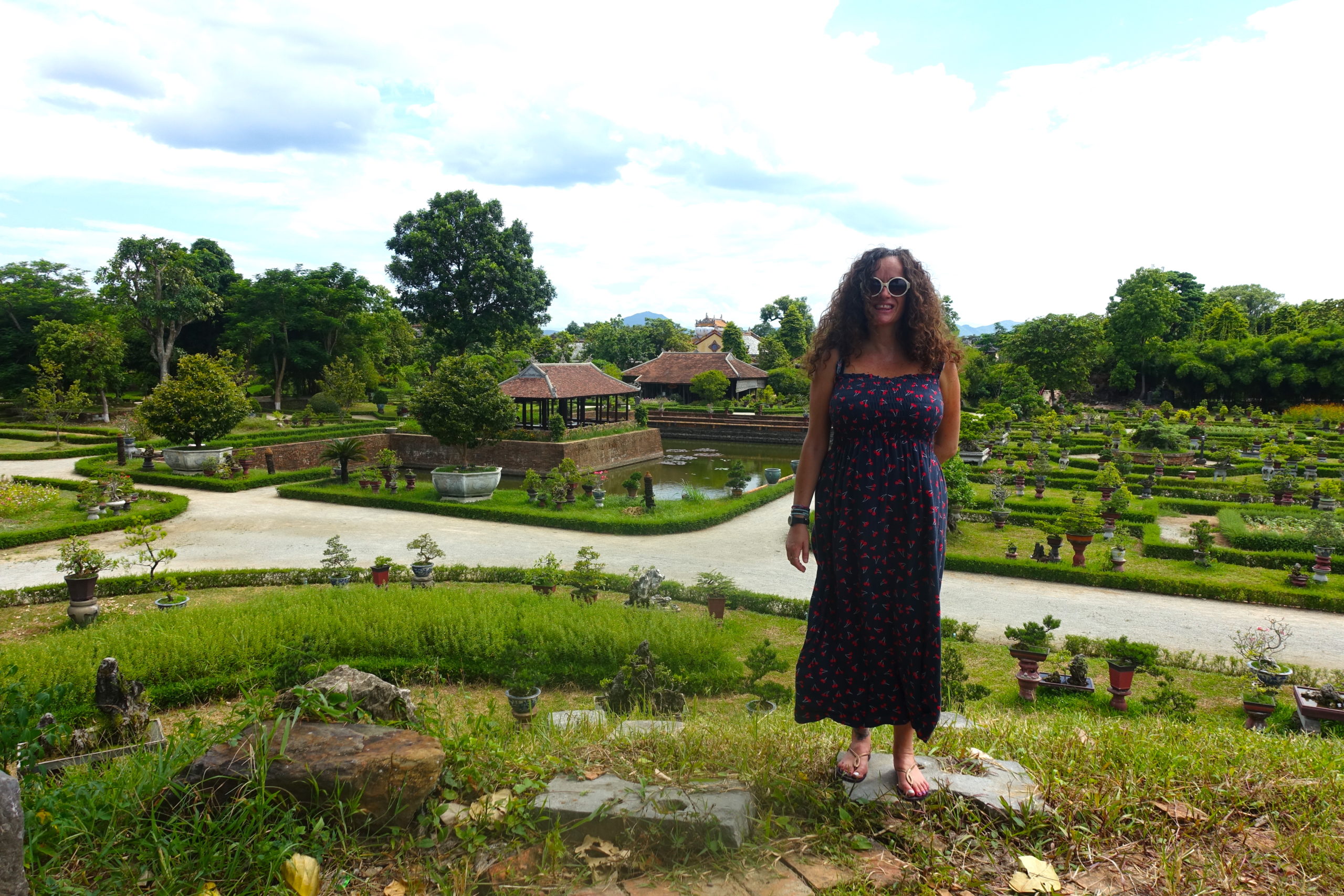
The citadel consists of a complex of palaces, temples and pavilions which architecture reflects a blend of traditional Vietnamese design and French colonial influences. Despite some damage cause by the Vietnam war, there are ongoing restoration efforts that preserve its historical significance. Today, Hue citadel has become a symbol of Vietnam’s rich heritage and attracts visitors from all over the world.
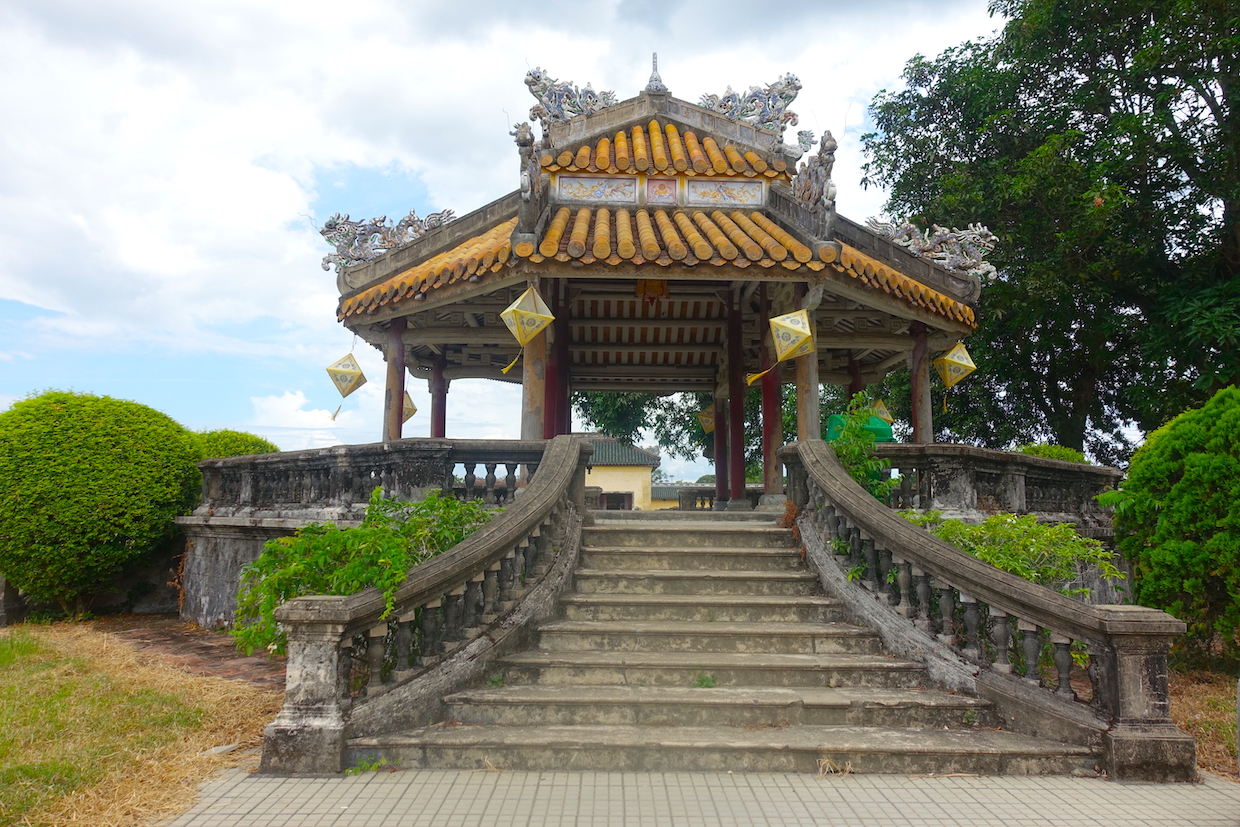
LANG CO BEACH
Lang Co beach is one of the best beaches in Vietnam and its captivating azure sea color and white sand make it really worth a visit. The beach is located around 30 Km North of Hue and it is can be easily reached from there. It is ideal for sunbathing and swimming and taking a break from your historical visit to the city center.
TAKE A BOAT TRIP IN THE PERFUME RIVER
One of the coolest things to do when visiting Hue is taking a boat trip in the Perfume river. The boat ride is a relaxed ride taking you back in time to the heart of Vietnam’s imperial history. As the current carries you along the river you will get past some ancient pagodas, lush greenery and traditional villages. Each turn on the boat ride will reveal a corner of the area rich historical heritage.
From the iconic Thien Mu Pagoda to the majestic Hue Citadel, every landmark along the riverbanks whispers tales of the past.
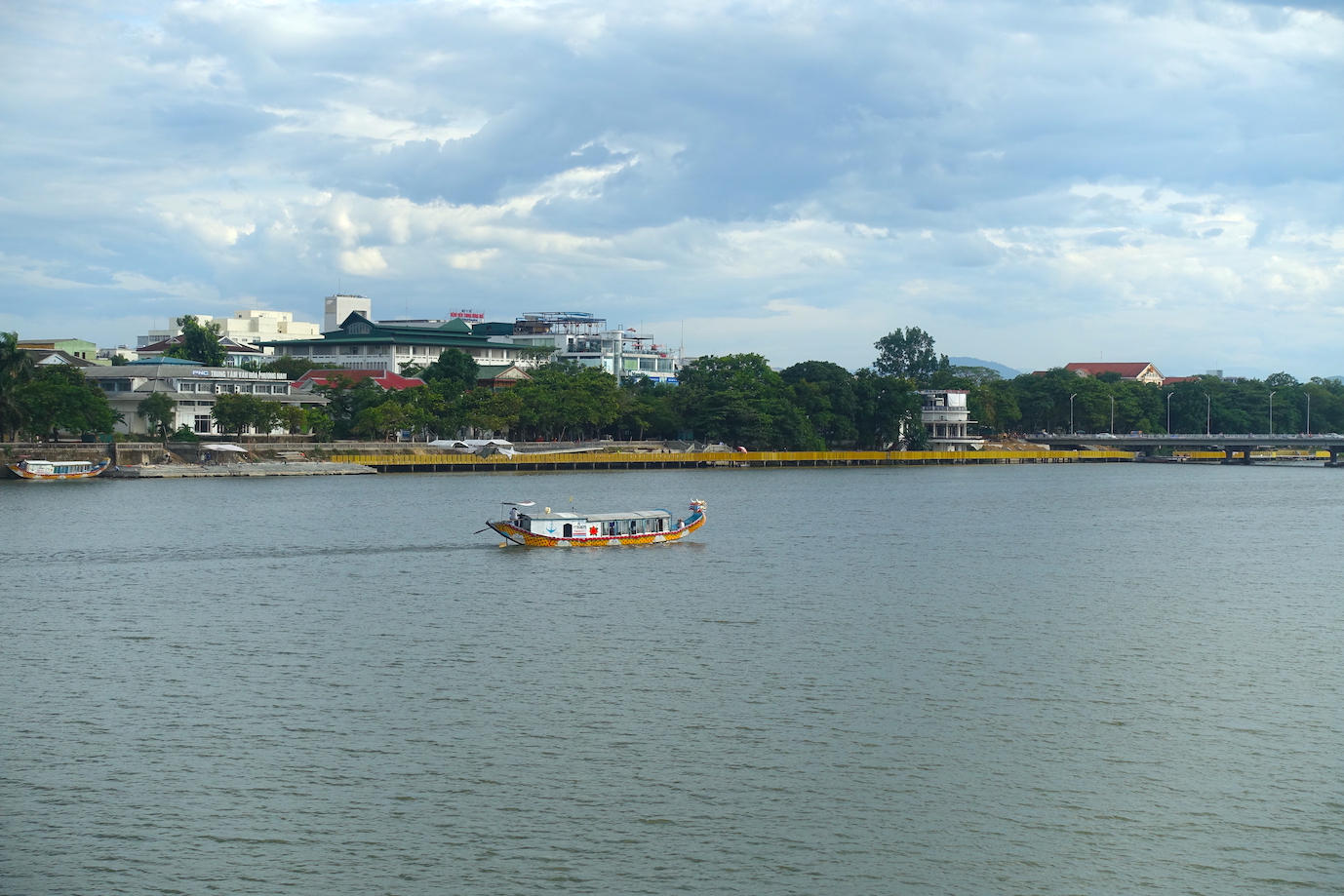
VISIT THE TU DUC TOMB
The Tomb of Emperor Tu Duc serves as the final resting place to the Emperor Tu Duc, the fourth ruler of the Nguyen Dynasty.
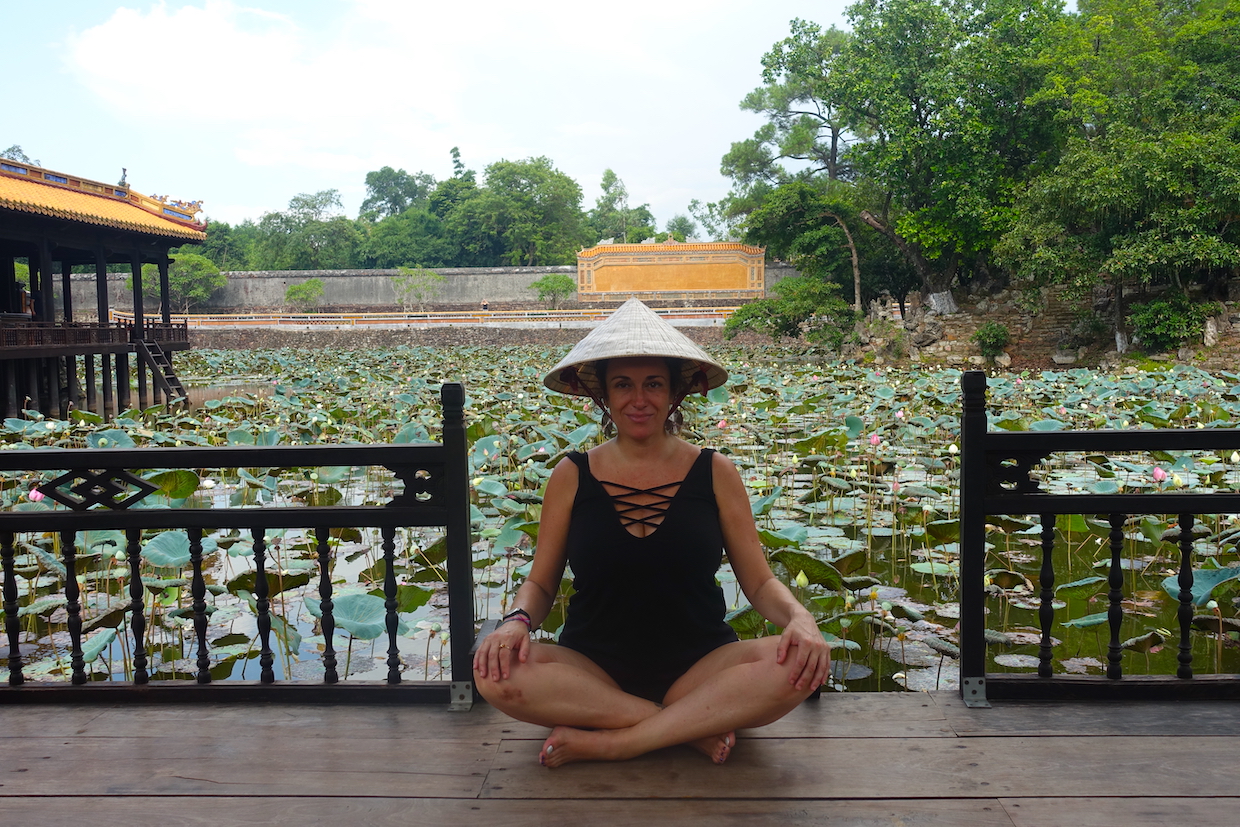
The funerary monument was built from 1864 to 1867 and it is an intricate complex of serene lakes, lush gardens and pavilions, in honor to the emperor’s poetic spirit.
Tu Duc was very well known for his introspective nature and he wrote his own epitaphs in the area, being a testimony to life’s transient nature.
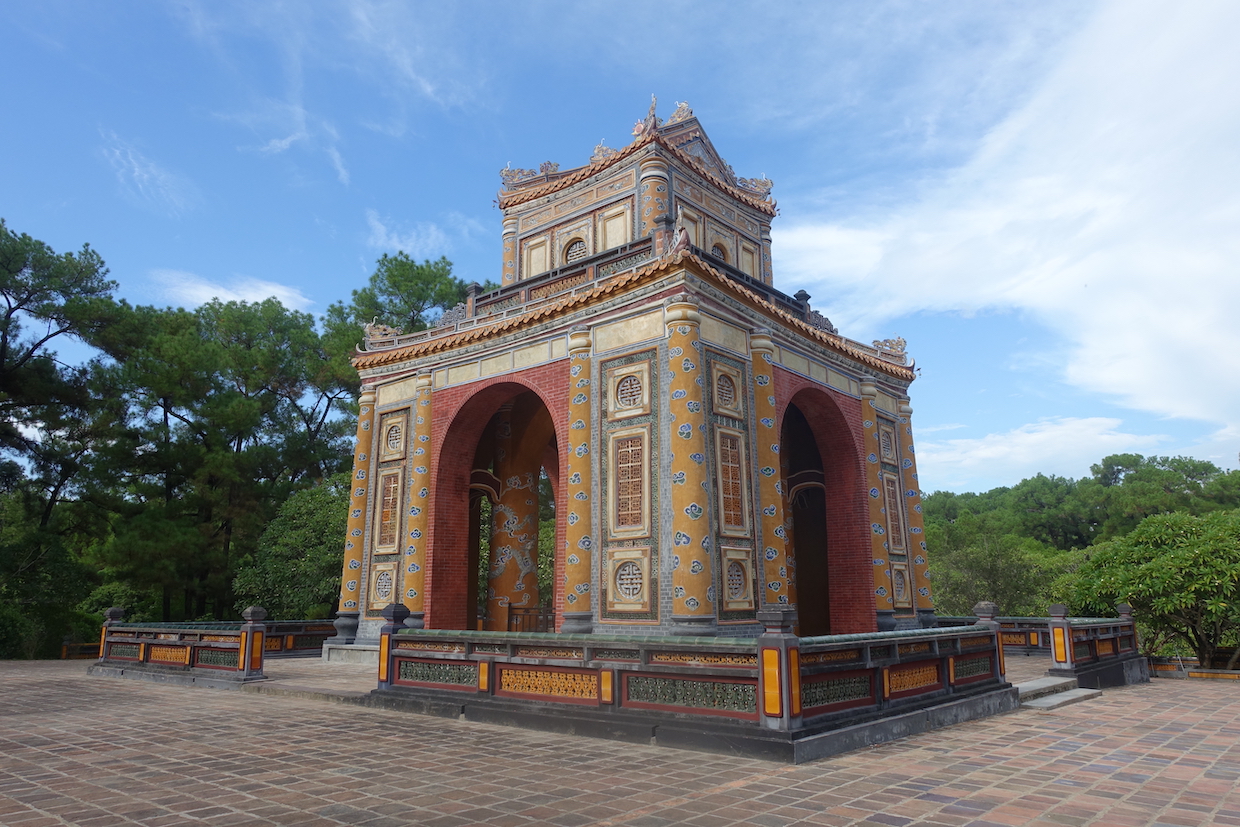
THE KHAI DINH TOMB
The Khai Dinh Tomb is a blend of Vietnamese architecture and European influences. It was built from 1920 to 1931 during the reign of Emperor Khai Dinh and it exudes opulence and grandeur. The tomb’s design showcases a unique blend of Gothic, Renaissance, and Vietnamese aesthetics, featuring intricate mosaics, ceramic frescoes, and detailed sculptures
The is is erched on Chau Chu Mountain, offering panoramic views of the surrounding countryside. Despite the controversy over its costly construction, Khai Dinh Tomb remains a captivating destination, symbolizing the intersection of cultures and the legacy of a tumultuous era in Vietnamese history.
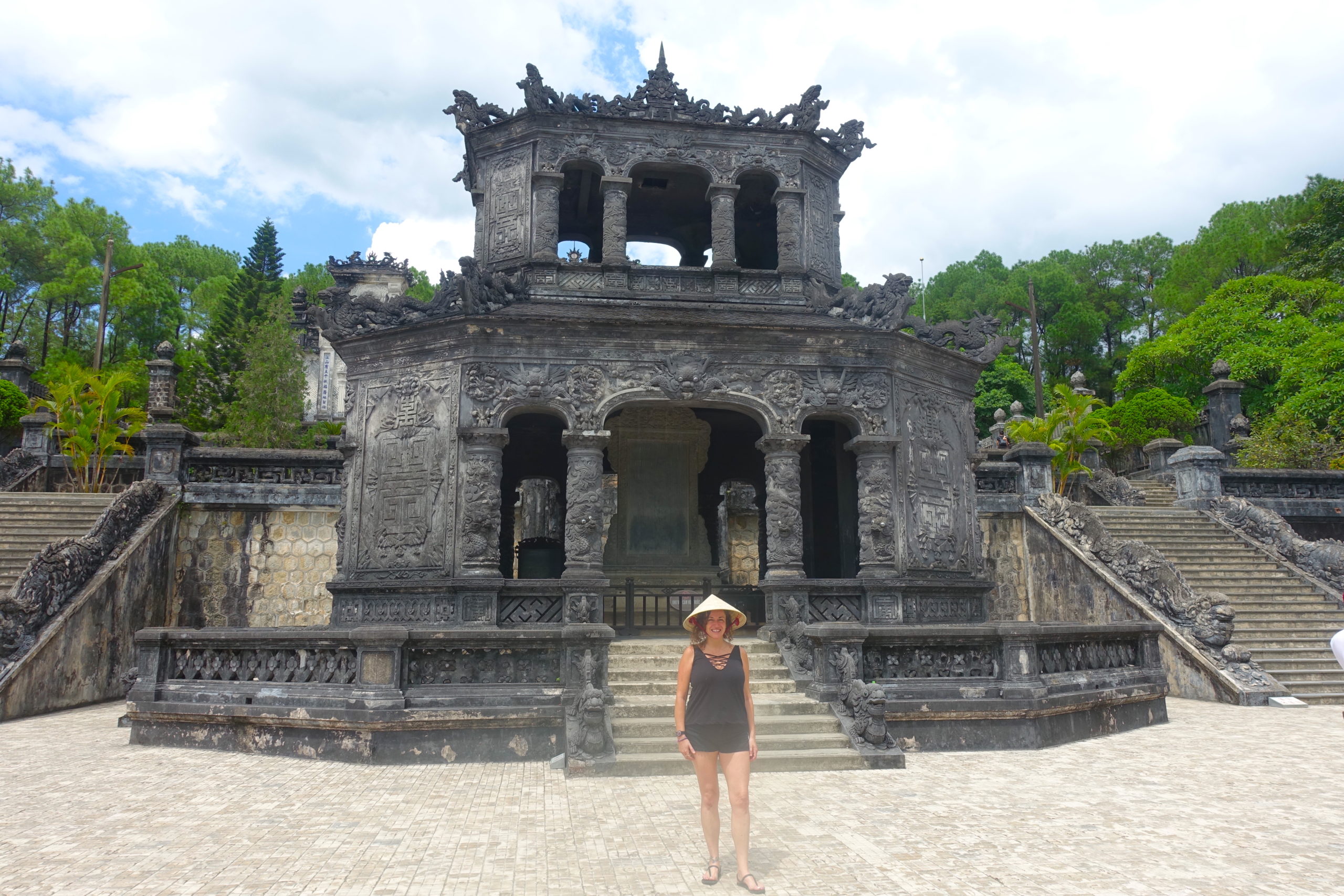
MINH MANG TOMB
The Minh Mang Tomb was built from 1840 to 1843 for the Emperor Minh Mang, the second ruler of the Nguyen Dynasty. It represents a harmonious fusion of Confucian principles and traditional Vietnamese architecture. The tomb’s layout follows the principles of Feng Shui, with meticulously landscaped gardens, tranquil ponds, and ornate pavilions creating a serene ambiance. Intricately carved stone statues, pavilions, and gates adorn the complex, showcasing exquisite craftsmanship. Minh Mang Tomb stands as a timeless tribute to a revered monarch and remains a cherished UNESCO World Heritage Site, drawing visitors from around the globe.
HON CHEN TEMPLE
The Hon Chen temple is located in the hills near Hue and it was originally a sacred site for the Cham people where they worshipped the Po Nagar, the mother goddess of the earth. As the Vietnamese embraced this deity, she became known as Mother Thien Y A Na. This transition marked a unique religious fusion, where Vietnamese traditions integrated with Cham religious features.
The temple is an oasis of spiritual tranquility and cultural richness. Pilgrims flock here annually during the Hon Chen Festival, offering prayers and rituals, keeping alive the sacred traditions of the region.
THIEN MU PAGODA
The Thien Mu pagoda is the tallest religious structure in the country, with seven floors representing reincarnation. The pagoda features a stunning octagonal tower, the Phuoc Duyen Tower, that rises gracefully.
There are tranquil gardens, ancient pavilions, and sacred shrines, inviting contemplation and meditation. A beacon of Buddhist faith and cultural heritage, Thien Mu Pagoda continues to draw pilgrims and visitors, leaving a lasting impression of peace and enlightenment
DONG BA MARKET
The Dong Ba market is the oldest and most iconic market in Hue and it dates back over a century.
The market is a feast for your senses and you will find there from traditional handicrafts to colorful textiles, reflecting Hue’s rich artistic traditions. Amidst the lively atmosphere, Dong Ba Market remains a cherished hub where the past and present intertwine, creating an unforgettable tapestry of sights, sounds, and flavors.
HUE ATTRACTIONS MAP
How to use this map: Use your computer mouse (or fingers) to zoom in or out. Click on the icons to get. Click on the icons to get more information about each place. Click the arrow on the top left corner for the index. Click the star next to the map’s title to add it to your Google Maps account. To view the map on your smartphone or PC, open Google Maps, click the menu and go to “Your paces/Maps”. If you want to print the map or see it in a bigger window, click on the view larger map on the top right corner.
HOW MANY DAYS IN HUE
You can visit Hue’s main attractions in one day, although my minimum recommended time is 3 days. If you would like to include a visit to the beach and take some time to relax my recommended time is five days in Hue.
BEST TIME TO VISIT HUE
The best time to visit Hue, Vietnam, is during the dry season from February to April and from September to November. During these months, the weather is generally mild and pleasant, with lower humidity and minimal rainfall, making it ideal for exploring the city’s historical sites, such as the Imperial Citadel and Thien Mu Pagoda. Additionally, the annual Hue Festival, held in April, offers a vibrant showcase of traditional music, arts, and cultural performances, adding an extra layer of excitement to your visit.
I visited Hue in August and it was extremely hot but still enjoyable.
WHERE TO STAY IN HUE
Jade Scene Hotel: The lovely hotel is located 1.5 Km from the Trang Tien Bridge and it offers beautiful rooms with an outdoor swimming pool, ideal to relax, after a day walking in the citadel ot other historical monument in Hue. The place has a great restaurant where Vietnamese food is served and a bar.
Thanh Lich Hue Hotel: Situated approximately 800 meters from Dong Ba Market in Hue, Thanh Lich Hue Hotel offers well-appointed and luminous rooms. Guests can also take advantage of complimentary WiFi access available throughout the propert
The Scarlett Boutique hotel: This little boutique hotel is a hidden gem in Hue. The hotel is located t near The Scarlett Boutique Hotel include Museum of Royal Antiquities, An Dinh Palace and Redemptorist Church.
Gardenia Hue hotel: This is a lovely hotel with great views of the city and an amazing room service. The rooms are stunning and it has a shared where you can cook your own food.
HUE FAQs
WHAT IS HUE FAMOUS FOR?
Hue is famous due to its royal mausoleums, imperial citadel an iconic pagodas. It offers a variety of cultural attractions. The city is also famous among food lovers for its culinary delights, being its more famous dish Bun Bo Hue.
CAN YOU VISIT HUE IN ONE DAY?
Yes, you can visit Hue in one day, although a bit in a hurry. You will be able to see all the main historical monuments in the city center and get a taste of Hue imperial past.
WHICH IS BETTER TO VISIT HUE OR HOI AN?
I would not say there is better or worse as I have visited both and I love them so much. If you would like to dig deep into the history of the lost Vietnamese dynasties Hue is the ideal choice. If you would like to see a pretty town, Hoi Am is the place for you..
IS HUE BETTER THAN DANANG?
Determining whether Hue is better than Da Nang depends on your preferences and interests. Hue, known for its rich history and cultural heritage, offers attractions such as the Imperial City, Thien Mu Pagoda, and Perfume River. It’s a great destination for history buffs and those interested in exploring ancient sites.
On the other hand, Da Nang boasts beautiful beaches like My Khe Beach and Non Nuoc Beach, as well as modern attractions like the Dragon Bridge and Marble Mountains. It’s perfect for beach lovers and those seeking a more contemporary city experience.
Ultimately, the “better” destination depends on what you’re looking for in your trip.
WRAP-UP
Yes, Hue is really worth a visit and it was a highlight during my month stay in Vietnam. It is also a bit off the beaten path place so you will be able to enjoy of its splendor in a more relaxed atmosphere. I really recommend you to add some days to your Vietnam itinerary.
- BAGAMOYO: LAY DOWN YOUR HEART - April 5, 2024
- IRENTE VIEWPOINT LUSHOTO, USAMBARA MOUNTAINS - April 3, 2024
- 16 FACTS ABOUT BANGKOK - March 31, 2024


